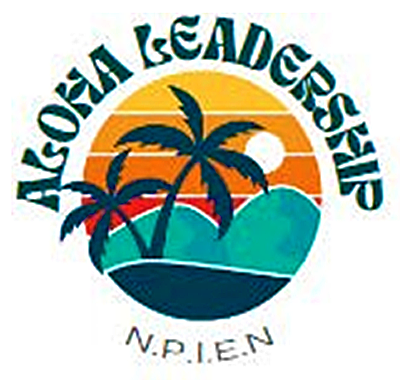
ALOHA LEADERSHIP IN SCHOOLS
National Pacific Islander Education Network
How Can School Leaders, and Student Leaders create an Aloha school environment.
The “Aloha Leadership” Project is designed to support all in the school community to develop a school campus where caring for each other is a major goal: school administrators, teachers, counselors, support staff and student leaders in creating a school climate where relationships among all members of the school are valued and serving one another is a priority.
ACKNOWLEDGEMENTS
We would like to thank the following individuals and organizations that have contributed-to-date: Hayward High School, Hayward, California, California State University, Dominguez Hills, Carson, California, Heritage High School, Brentwood, California, Morse High School, San Diego, California and Chrisman High School, Independence, Missouri, Shreya Naiker, Shyla Lala, Danielle Kalani Heinz, Lupe Moe, Alex Niuatoa, Sisa Fonua, Elijah Sega, Vineta Fukofuka, Rina Huang, Zelornette Asido, and Daniel Pouesi. Cover Stingray Logo by Morse High School.
Our Major Sponsor is Gofundme.org
FOREWARD BY ZELORNETTE ASIDO
What is Aloha Leadership?
This is a movement which provides information about how to lead with Aloha, designed to support schools and the community. The purpose of Aloha Leadership is to care for one another in the school Ohana, or community: staff, teachers, counselors, and students and also to create an atmosphere which will provide all in the community to feel valued and be part of a priority to support one another.
The Aloha Leadership movement started with Dr. Victor C. Thompson, the Executive Director of the National Pacific Islander Education Network. The Aloha Leadership discusses his life and what he experienced growing up. He is a Samoan and was born on the Big Island of Long Beach, California and was raised in Downtown and East Long Beach and Fountain Valley, Orange County. He talks about his parents, who taught him to be kind and to give service to others. He remembers from his youth that he brought food to his neighbors on holidays, and other such kindness duties which did not make sense to him at the time until he discovered the “Aloha, Alofa Way.” Having to use this method of leadership did not always give a good result yet it did not change what he wanted to pursue. Dr. Thompson served as an Educational Leader, believed that working together as a school can build a group that will show care, and he not only helped students with their education, but he also helped others to self-improve because he understands and cares for the people surrounding him.
The principles of the Aloha/Alofa/Aroha/Bula/Guiaya/Iokwe/Loloma/’Ofa Leadership:
The staff leaders in the school lead with compassion, empathy, sympathy, and understanding. They even also take time to listen to students, teachers, and also parents to know their concerns or their opinion on anything. They appreciate and value their colleagues and also view them as the most important asset of the organization. They also value the relationships they have with one another despite the diverse characteristics. You can really see how much they care and put effort with one another. They enjoy serving each other and, in the school, organization, and in the community.
By Zelornette Asido, NPIEN Intern
